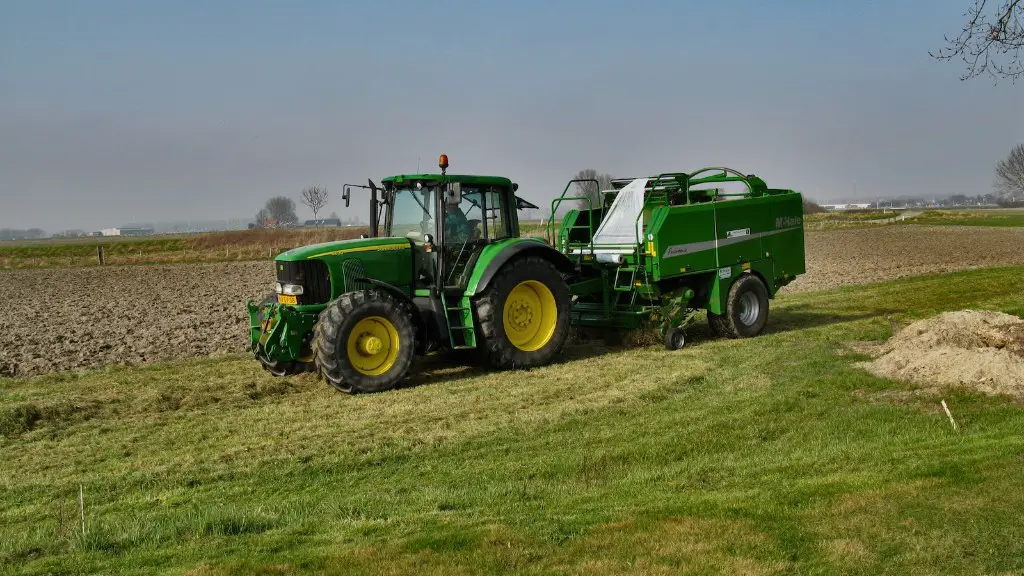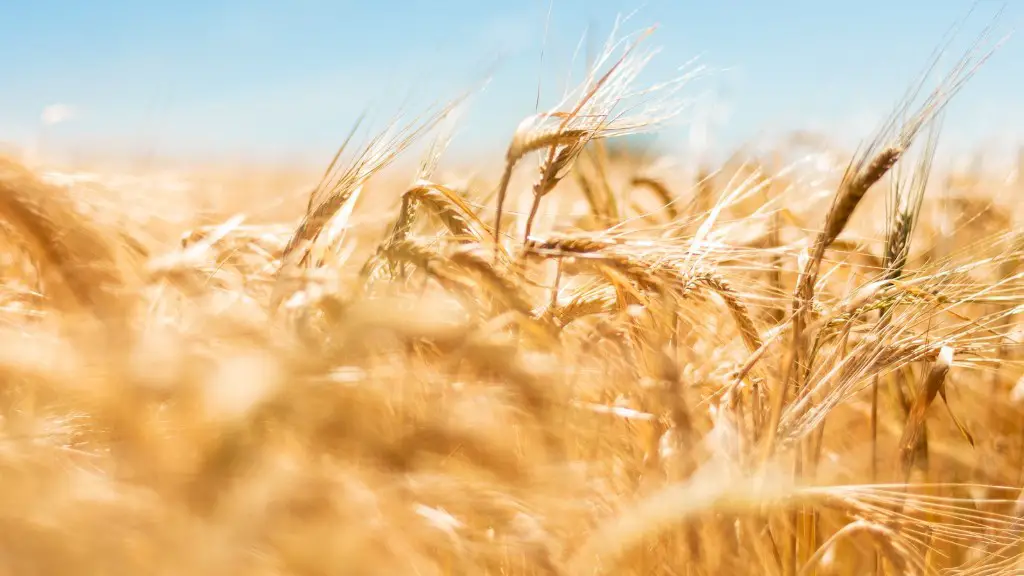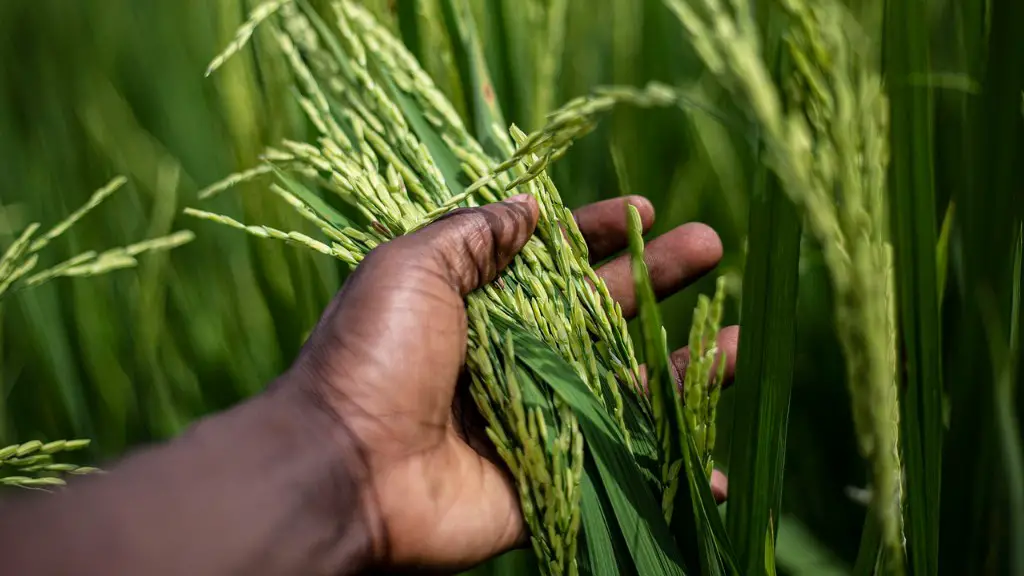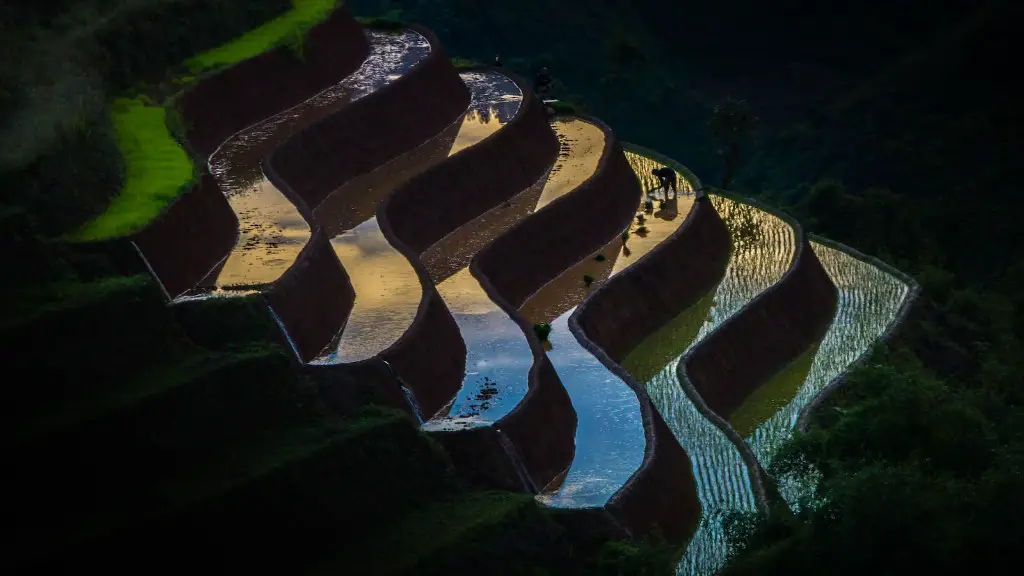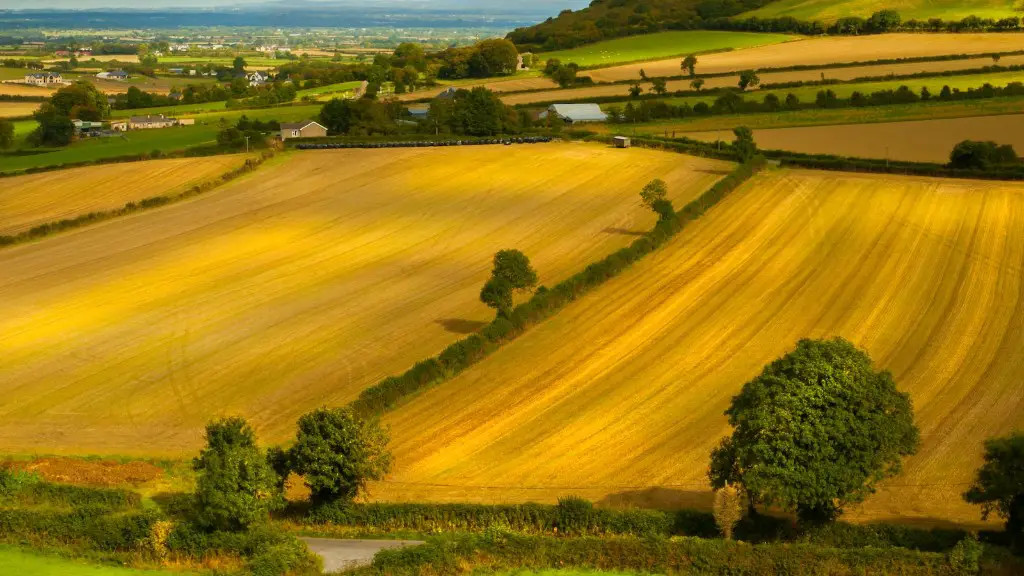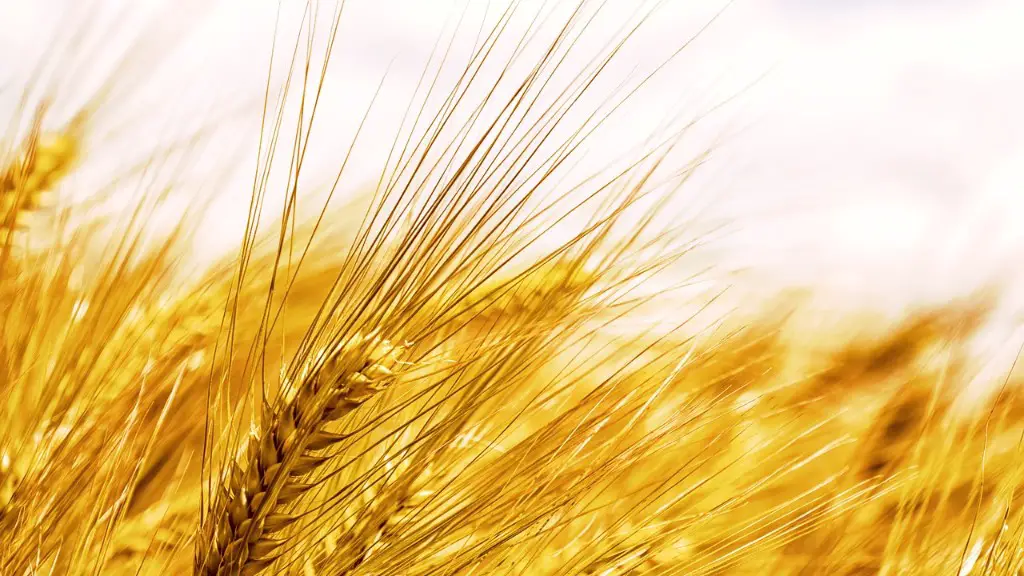Agriculture has the potential to greatly and negatively impact our environment. Large areas of land have been cleared to make way for agricultural practices, which has resulted in deforestation and destruction of habitats, while the amount of water consumed by agriculture has had far reaching negative effects on local and global water supplies. Intensive farming of livestock has also resulted in water and air pollution as well as loss of species and biodiversity, while increased use of chemicals has contaminated soil, water, and air.
Deforestation is one of the most destructive outcomes of modern agricultural practices. Clearing forests for the purpose of growing crops or raising livestock can have a damaging effect on native ecosystems, as the destruction of natural habitats from deforestation can cause species to become endangered, or worse, extinct. Not only has this resulted in direct loss of species, but it can also lead to soil erosion and an increase in air pollutants such as carbon dioxide and methane, both of which contribute to climate change.
Water shortages are also a major environmental problem caused by the intensive farming of crops and livestock. Most agricultural activities require large amount of water, and this has resulted in depletion of domestic water supplies. In addition, chemical fertilizers and pesticides used in crop cultivation can run off into lakes and rivers, leading to contamination of ground and surface water.
The use of large-scale machinery and chemical fertilizers and pesticides in agriculture has caused air and water pollution. Carbon dioxide and other gases released from burning fossil fuels in vehicles and machinery contribute to air pollution, while runoff from fertilizers and pesticides can contaminate surface and ground water. Not only does this water contamination affect drinking water for humans, but it can also have a detrimental effect on local wildlife populations.
Agriculture is responsible for a large portion of soil contamination and degradation. Large amounts of chemical fertilizers, pesticides and herbicides used in farming can damage soil structure, making it more susceptible to erosion, while also reducing soil fertility. There is also a risk of groundwater contamination due to runoff of chemicals, which can lead to a decline in the quality of drinking water and the health of the local population.
The heavily intensified and industrialised nature of modern agricultural practices has had devastating impacts on biodiversity and ecosystems around the world. The destruction of natural habitats caused by deforestation and the overuse of chemical fertilizers and pesticides has led to the loss of many species, while the decline of water quality and availability has also had an effect on native wildlife. These negative impacts of agriculture on the environment can be mitigated by utilising more sustainable farming practices.
Effects of Pesticide Use
The use of pesticides in agricultural production has the potential to have a significant negative impact on the environment. Pesticides can be toxic to humans and animals alike, and therefore their incorrect usage can contaminate ground, surface, and drinking water, while they can also enter the food chain and lead to health problems. The persistent nature of pesticides and their ability to spread easily make them particularly hazardous to people and other living organisms, including birds and aquatic life.
Naturally occurring processes, such as weathering and the degradation of organic matter, can break down the pesticide components and make the contaminated soil and water less hazardous. However, some of the more persistent components of pesticides can linger in the environment for decades without breaking down. This can create a toxin build-up in the soil and water that can have devastating effects on ecosystems.
The long-term progressive accumulation of persistent pesticides in aquatic ecosystems can lead to water contamination, which can in turn interfere with aquatic life and reduce the biodiversity. In addition, this accumulation can contaminate drinking water, which could lead to health problems for humans. Furthermore, when pesticide residues come into contact with soil organisms, it can disrupt or destroy microbial communities, which can lead to a reduction in soil fertility.
In order to counteract pote
n\tial ecological damage from pesticide use, countries have started to introduce regulations that require farmers to maintain certain levels of pesticide use, while local bodies are also encouraging more sustainable forms of farming in order to reduce the environmental damage caused by pesticide use. Furthermore, farmers have access to more organic techniques that don’t rely on the use of chemicals.
Invasive Species
The introduction of non-native species into ecosystems can have a detrimental effect on biodiversity, ecosystems and the environment, as these species may have traits that allow them to out-compete native species for resources and water. Agriculture can be a contributor to the introduction of invasive species, as the transportation and trade of agricultural produce can lead to the accidental introduction of species that are not native to the area.
The consequences of the introduction of invasive species can be significant, as these species can displace native species and disrupt the ecological balance of an area. In addition, some invasive species can alter the physical environment, such as the spread of weed-like species, which can lead to an increase in erosion and soil nutrient depletion. Invasive species can also interfere with the water cycle, which can have a detrimental effect on water quality and availability.
In order to counteract the potential of invasive species introduction, governments and local bodies have started to introduce regulations and restrictions to the trade and transportation of agricultural produce. Quarantine procedures are also in place in order to reduce the chances of non-native species becoming established in a particular environment. In addition, more sustainable agricultural practices have been developed, which seek to reduce the environmental impact of agriculture and reduce the chance of non-native species becoming established.
Reduction of Biodiversity
Agriculture has had a significant effect on biodiversity and the environment, as changes in land use for crop production and livestock grazing has led to a reduction in available habitats for many species. This can result in the native species becoming endangered or even extinct, as they are unable to compete with introduced species or the disruption of their natural habitats.
In addition, agricultural practices, such as the use of chemical fertilizers and pesticides, can lead to a reduction in soil fertility, while the reduction of natural habitats can also lead to a reduction in species richness and abundance. Furthermore, the introduction of non-native species can disrupt the local ecology, leading to a decrease in biodiversity.
In order to reduce the environmental impacts of agriculture, governments and local bodies have introduced various regulations and restrictions on agricultural activities. More sustainable practices and biotechnology have also been developed, which seek to reduce the environmental damage caused by agricultural activities. Furthermore, reintroduction of lost species and habitat restoration are also being carried out to compensate for the damage caused by agriculture.
Effects of Herbicides
The use of herbicides in agricultural production has the potential to have a negative impact on the environment, as the chemicals used in herbicides can contaminate ground, surface, and drinking water. The toxic nature of some herbicides can also lead to health problems in humans and animals, while they can also enter the food chain and affect aquatic life.
Herbicides can be broken down naturally by the processes of weathering and the degradation of organic matter. However, some of the more persistent components of herbicides can linger in the environment for decades without breaking down. This can lead to an accumulation of herbicides in the soil and water, which can have a detrimental effect on ecosystems.
The accumulation of chemicals in aquatic ecosystems can lead to water contamination, interference with aquatic life and a reduction in species richness and abundance. In addition, the buildup of toxins can contaminate drinking water, which could lead to health problems for humans. Furthermore, when herbicide residues come into contact with soil organisms, it can disturb or kill microorganisms, leading to a reduction in soil fertility.
In order to reduce the risk of environmental damage from herbicides, farm operators are required to observe certain regulations and restrictions on the amount of herbicides and the methods of their application. Sustainable practices, such as integrated pest management, also exist to reduce the environmental damage caused by agricultural activities. In addition, farmers now have access to biopesticides and newer formulations that are less dangerous to the environment.
Soil Erosion & Compaction
Agricultural practices have the potential to cause soil erosion and compaction, which can have a detrimental effect on agricultural land and water sources. The overuse of agricultural machinery can lead to soil compaction, which can reduce porosity of the soil and thus its water absorption capacity, while the clearing of forests and other native vegetation can lead to erosion of topsoil, which can be a major contributor to water pollution.
Soil erosion can cause problems for local water sources, as it can lead to an increase in sediment and silt in rivers and other waterways. This can reduce the quality of drinking water and lead to waterborne diseases, while it can also interfere with the natural cycle of water, leading to water shortages. Soil erosion can also affect agricultural land, as it can make soil infertile and less productive.
In order to mitigate the effects of soil erosion and compaction, governments and local bodies have introduced regulations on agricultural activities, such as restrictions on the use of machinery and soil compaction. Sustainable farming practices, such as crop rotation and the use of no-till farming, have also been introduced to reduce soil erosion and compaction. Furthermore, habitat restoration and reforestation are also being carried out to reduce soil erosion and its negative impacts on agricultural activities.
